River of Life Socks - Free Pattern April 29, 2022 11:43

Check out the pattern on Ravelry.

Purchase the Ad-Free PDF from Ravelry.
Or pay what works for the PDF on Ko-Fi
See all patterns available on Patreon
Skill Level
Intermediate
Finished Measurements
Foot Circumference: 7¼ (8¼)" / 18.5 (21) cm.
Select size based on foot circumference. Length is adjustable.
Foot Length: 9 (10)" / 23 (25.5) cm
Leg Length: 4½ (5½)" / 11.5 (14) cm
Yarn
Sock weight (CYCA #1 Super Fine)
About 450 yards / 410 meters.
Shown in: Classic Elite Yarns Alpaca Sox (60% alpaca, 20% Merino wool, 20% nylon; 3.5 oz / 100 gram hank = approx 450 yards / 410 meters):
1 hank
Knitting Needles
Size US 2 / 2.75 mm: set of 4 double pointed (dpns), or size needed
to obtain gauge.
Notion
tapestry needle
Gauge
30 sts and 40 rnds = 4" / 10 cm in Stockinette Stitch. Take time to save time, check your gauge.
Notes
- Socks are worked from the top down.
- The heel is shaped with a heel flap, and some short-rows at the turn, then the
gusset stitches are picked up along the selvedge edge of the heel flap.
Decreases are worked to shape the gusset then the foot is worked even to the
toe shaping. After decreasing the toe the remaining stitches are joined using the
kitchener stitch.
- This pattern is written to be worked on double pointed needles, however the
magic loop method may be used if that’s your preferred way to knit socks.

Pattern
Leg
CO 60 (75) sts.
Arrange sts so there are 15 (30) sts each on Needles 1 and 3 and 30 (15) sts on Needle 2.
Purl 2 rnds.
Work Rnds 1–6 of River Patt 7 (9) times, ending after Rnd 6 of patt.
Leg should meas approx 4½ (5½)" / 11.5 (14) cm from beg.

Heel Flap
Setup Row (RS): Sl 7 (4) sts from end of Needle 3 to beg of Needle 1;
sl 7 (4) sts from beg of Needle 2 to end of Needle 1;
knit to end of Needle 1.
29 (38) sts on Needle 1; rem 31 (39) sts will be worked later for instep
Heel flap is worked back and forth in rows on Needle 1 only.
Turn work to continue with a WS row.
Row 1 (WS): Sl 1 st pwise wyf, purl to end.
Row 2 (RS): *Sl 1 st kwise wyb, k1; rep from * to last st, k1.
Rep the last 2 rows 14 (17) more times—15 (18) chain edge sts at each selvedge edge of heel flap.
Heel flap should meas approx 2 (2½)" / 5 (6.5) cm from held sts.
Heel Turn
Work short rows to shape heel as follows:
Short-Row 1 (WS): Sl 1 st pwise wyf, p16 (22), p2tog, p1, turn work.
Short-Row 2 (RS): Sl 1 st pwise wyb, k6 (9), ssk, k1, turn work.
Short-Row 3: Sl 1 st pwise wyf, purl to 1 st before gap produced on previous row, p2tog (1 st from each side of gap), p1, turn.
Short-Row 4: Sl 1 st pwise wyb, knit to 1 st before gap produced on previous row, ssk (1 st from each side of gap), k1, turn.
Rep short-rows 3 and 4 until all heel sts have been worked—17 (24) sts rem.
Note: On the last 2 rows, omit the knit or purl st after the dec if necessary.
{Insert Ad}
Gusset
Pick up sts along selvedge edge sts of heel flap and rejoin for working in the rnd as follows:
Set-up Rnd:
With Needle 1: pick up and knit 15 (18) sts along edge of heel flap;
With Needle 2: k0 (4), work 31 instep sts in Instep Panel, k0 (4);
With Needle 3: pick up and knit 15 (18) sts along other edge of heel flap, then knit 8 (12) sts from Needle 1—78 (99) sts; 24 (30) sts on Needle 1; 31 (39) sts on Needle 2; 23 (30) sts on Needle 3.
The beg of rnd is now at the center of the heel.
Dec Rnd:
on Needle 1: knit to last 2 sts, k2tog;
on Needle 2, work in Instep Panel as est;
on Needle 3, ssk, work to end—2 sts dec’d.
Next Rnd:
on Needle 1, knit;
on Needle 2, work in Instep Panel as est;
on Needle 3, knit.
Rep the last 2 rnds 8 (14) more times—60 (69) sts rem.

Foot
Next Rnd:
on Needle 1, knit;
on Needle 2, k0 (4), work 31 sts in Instep Panel as est, k0 (4);
on Needle 3, knit.
Cont working as established on the previous rnd until piece meas 7¼ (8)" / 18.5 (20.5) cm from back of heel, or 1¾ (2)" / 4.5 (5) cm less than desired total foot length, ending after rnd 6 of Instep Panel.

Toe
Shape toe for your size as follows:
SMALLER SIZE ONLY:
Set-up Rnd:
on Needle 1, knit;
on Needle 2, k2tog, work to last 2 sts, ssk;
on Needle 3, knit.
58 sts rem; 15 sts on Needle 1; 29 sts on Needle 2; 14 sts on Needle 3.
LARGER SIZE ONLY:
Set-up Rnd:
on Needle 1, knit, k1 from Needle 2;
on Needle 2, k1, ssk, k2tog, k13 sts, k2tog, knit to last 6 sts, ssk, k2tog, k2;
on Needle 3, slip last st from Needle 2 onto Needle 3, knit to end of rnd
64 sts rem; 16 sts on each Needles 1 and 3; 32 sts on Needle 2.
BOTH SIZES
Next Rnd: Knit.
Dec Rnd:
on Needle 1, knit to last 3 sts, k2tog, k1;
on Needle 2, k1, ssk, knit to last 3 sts, k2tog, k1;
on Needle 3, k1, ssk, knit to end—4 sts dec’d.
Rep the last 2 Rnds 7 (8) more times—26 (28) sts rem.
Rep Dec Rnd only 2 times—18 (20) sts rem.
Knit the sts from Needle 1 onto Needle 3—9 (10) sts on each of 2 needles.
Finishing
Break yarn leaving approx 8" / 20.5 cm tail. Thread tapestry needle with tail and using Kitchener St, graft toe sts together. Weave in loose ends. Block lightly.
Pattern Stitches
RIVER PATTERN(multiple of 15 sts)
Rnd 1: *P1, m1R, k3, p2, p3tog, p2, k3, m1L, p1; rep from *.
Rnd 2: *P1, k4, p5, k4, p1; rep from *.
Rnd 3: *P1, m1R, k4, p1, p3tog, p1, k4, m1L, p1; rep from *.
Rnd 4: *P1, k5, p3, k5, p1; rep from *.
Rnd 5: *P1, m1R, k5, p3tog, k5, m1L, p1; rep from *.
Rnd 6: *P1, [k6, p1] 2 times; rep from *.
Rep Rnds 1–6 for patt.
INSTEP PANEL
(panel of 31 sts)
Rnd 1: P2tog, p2, k3, m1L, p2, m1R, k3, p2, p3tog, p2, k3, m1L, p2, m1R, k3, p2, p2tog.
Rnd 2: P3, k4, p2, k4, p5, k4, p2, k4, p3.
Rnd 3: P2tog, p1, k4, m1L, p2, m1R, k4, p1, p3tog, p1, k4, m1L, p2, m1R, k4, p1, p2tog.
Rnd 4: [P2, k5] 2 times, p3, [k5, p2] 2 times.
Rnd 5: P2tog, k5, m1L, p2, m1R, k5, p3tog, k5, m1L, p2, m1R, k5, p2.
Rnd 6: P1, k6, p2, k6, p1, k6, p2, k6, p1.
Rep Rnds 1–6 for Instep Panel.
 KITCHENER STITCH
KITCHENER STITCH
Watch the video tutorial
Step 1: Bring threaded tapestry needle through first st on front needle as if to knit and slip this st off needle.
Step 2: Bring threaded tapestry needle through next st on front needle as if to purl and leave st on needle.
Step 3: Bring threaded tapestry needle through first st on back needle as if to purl and slip this st off needle.
Step 4: Bring threaded tapestry needle through next st on back needle as if to knit and leave st on needle.
Rep Steps 1–4 until no sts rem on needles.
Abbreviations
approx: approximately
beg: begin(ning)
cm: centimeter
CO: cast on
cont: continue
dec(‘d): decrease(d)
dpn(s): double pointed needle(s)
inc(‘d): increase(d)
est: establish(ed)
k: knit
k2tog: Knit 2 sts together—1 st dec'd.
kwise: knitwise
m1L: (make 1 left slanting) Insert left needle under horizontal strand
between st just worked and next st, from the front to the back, knit through the back loop—1 st inc'd.
m1R: (make 1 right slanting) Insert left needle under horizontal strand between st just worked and next st, from the back to the front, knit this st—
1 st inc'd.
mm: millimeter
meas: measure(s)
p: purl
p2tog: Purl 2 sts together—1 st dec'd.
p3tog: Purl 3 sts together—2 sts dec'd.
patt: pattern
pwise: purlwise
rem: remain(ing)
rep: repeat
rnd(s): round(s)
RS: right side
sl: slip
ssk (slip, slip, knit): Sl 2 sts, 1 at a time, kwise to the right needle; return sts to the left needle in turned position and knit them together through the back loops—1 st dec'd.
st(s): stitch(es)
WS: wrong side
wyb: with yarn in back
wyf: with yarn in front



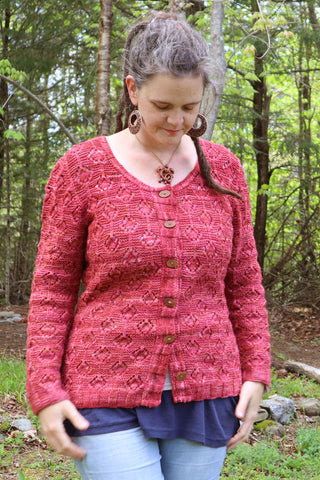
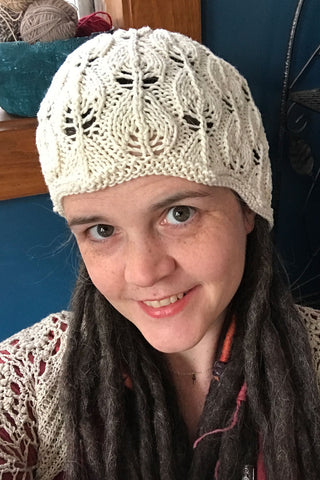
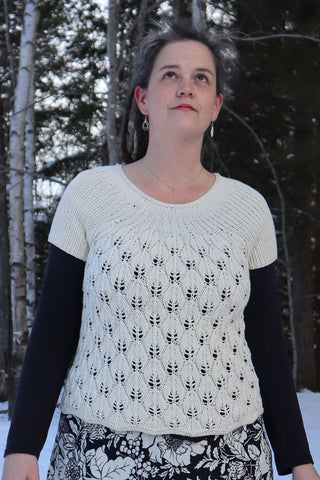

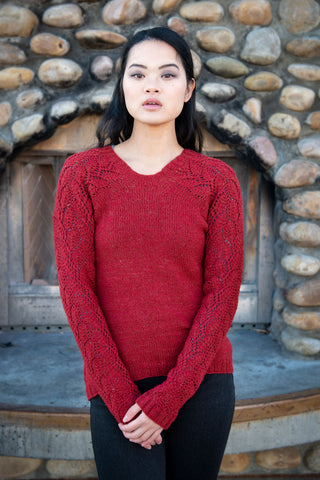
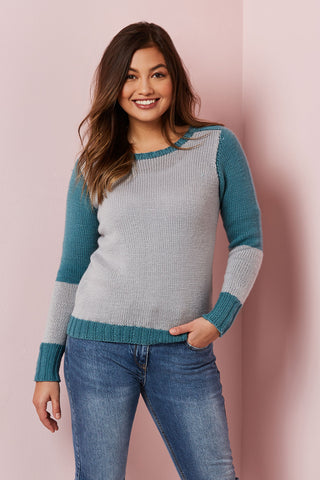
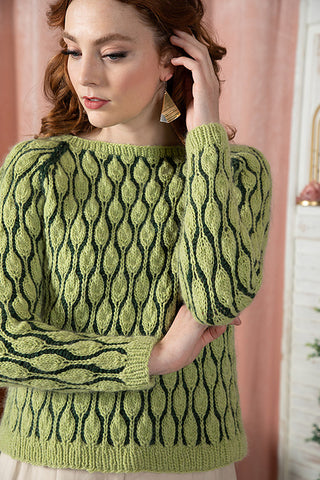
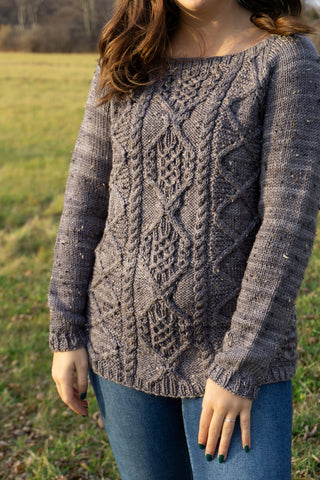
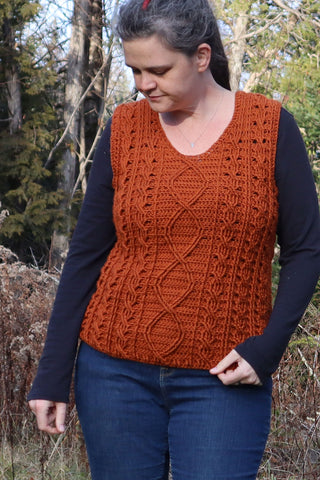
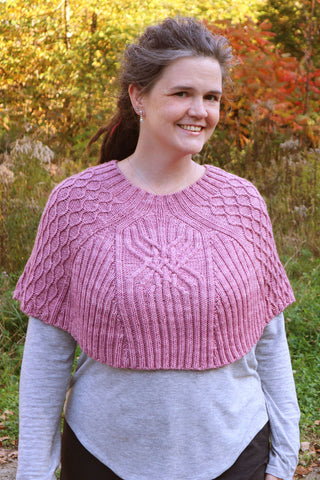
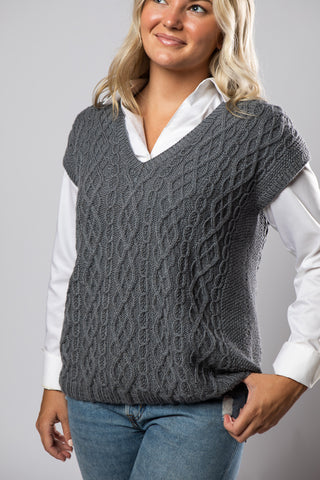
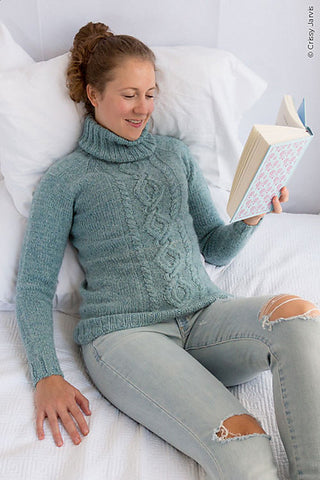
 Nothing will be posted on your behalf.
Nothing will be posted on your behalf.

